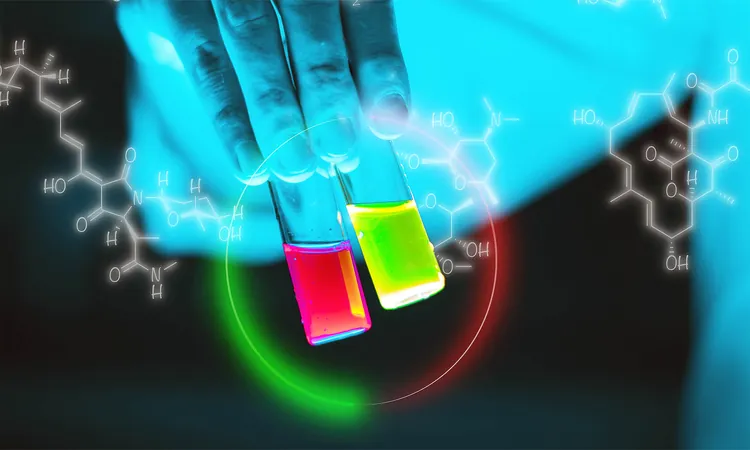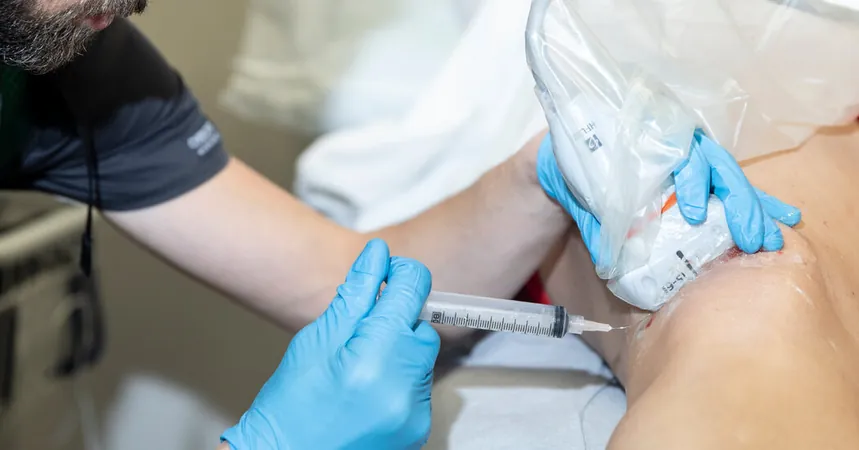
Revolutionary Protein Boosts Lifespan, Strength, and Brain Function with Just One Dose!
2025-05-10
Author: Jessica Wong
The Dread of Aging: A Challenge for Many
As we grow older, concerns about dwindling strength, stamina, and cognitive sharpness haunt many individuals. Fortunately, groundbreaking research is uncovering methods to not only extend our lifespans but also enhance our overall well-being.
Discovering the Secret Protein: Klotho
A distinguished global team, spearheaded by Professor Miguel Chillón from the Institute of Neurosciences at the Autonomous University of Barcelona, has made a remarkable discovery revolving around a natural protein called Klotho. Its secreted form, known as s-KL, is generating excitement in the scientific community for its potential role in promoting healthier aging.
Klotho: The Protein of Youth
Klotho first made waves in the late 1990s when studies showed that mice lacking this protein aged prematurely, exhibiting frailty beyond their years. Professor Chillón remarked, "Our ongoing research into Klotho has revealed its therapeutic promise against neurodegenerative diseases, and we are excited to explore its implications for healthy aging across various factors."
Gender Differences in Response to s-KL
Interestingly, the effects of s-KL differ between male and female mice. Males demonstrated significant improvements in lifespan and muscle strength. In contrast, females displayed stronger benefits in bone structure, particularly when treated earlier. This variation hints at potential biological nuances that could inform sex-specific interventions for humans.
Reaping the Rewards of s-KL
Mice administered s-KL showed remarkable retention of muscle tissue and reduced scarring typically associated with aging, coupled with enhanced endurance and coordination. Moreover, s-KL appeared to preserve the structural integrity of bones, reducing fracture risk. These findings align with prior research that linked Klotho to healthier bone mineralization.
Timing is Everything: When to Administer s-KL?
Researchers noted striking improvements in longevity and physical health in mice treated at 12 months versus those treated at 6 months. The increased s-KL production following treatment suggests that middle age may be the optimal window for intervention, raising pivotal questions about the timing of clinical applications in humans.
Brain Health: A Dual Benefit
Beyond physical advantages, the study also revealed enhancements in brain health. The hippocampus, vital for memory, exhibited markers of increased neurogenesis, indicating that s-KL may foster the growth of new neurons. This could lead to better waste removal and lower inflammation in the brain, potentially combating age-related cognitive decline.
The Future of s-KL Research and Its Implications for Humans
While these promising results stem from mouse studies, they lay a foundation for future human therapies targeting age-related decline in mobility, memory, and bone strength. Unlike current treatments that tackle one issue at a time, the holistic approach of s-KL suggests a revolutionary pathway for aging that synergizes with the body's repair mechanisms.
What Lies Ahead?
As scientists strive to find an effective delivery method for s-KL, the implications for enhancing quality of life in aging populations are profound. Ongoing research will focus on the best administration strategies for humans and the exploration of s-KL's intricate biological pathways. This exciting study has been published in Molecular Therapy, setting the stage for potential breakthroughs in how we age.



 Brasil (PT)
Brasil (PT)
 Canada (EN)
Canada (EN)
 Chile (ES)
Chile (ES)
 Česko (CS)
Česko (CS)
 대한민국 (KO)
대한민국 (KO)
 España (ES)
España (ES)
 France (FR)
France (FR)
 Hong Kong (EN)
Hong Kong (EN)
 Italia (IT)
Italia (IT)
 日本 (JA)
日本 (JA)
 Magyarország (HU)
Magyarország (HU)
 Norge (NO)
Norge (NO)
 Polska (PL)
Polska (PL)
 Schweiz (DE)
Schweiz (DE)
 Singapore (EN)
Singapore (EN)
 Sverige (SV)
Sverige (SV)
 Suomi (FI)
Suomi (FI)
 Türkiye (TR)
Türkiye (TR)
 الإمارات العربية المتحدة (AR)
الإمارات العربية المتحدة (AR)